At Google I/O 2023 the Pixel Tablet was finally fully revealed after a teaser a year earlier at Google I/O 2022. The 11-inch slate is Google’s first tablet in almost five years and its first Android tablet in nearly eight.
Neither achieved any commercial success, so the smart money would have been betting against the Pixel Tablet. But the last couple of years has given us a bold new Google hardware division with its Tensor chips and Titan M2 security chips alongside a focus on value and extending its renowned software prowess.
However, the crucial decision Google made with Pixel Tablet is not trying to create an “iPad killer,” but rather crafting a product all its own. The Pixel Tablet will not replace your laptop, and that’s to its great benefit as the focus on smart home and entertainment is a breath of fresh air and reflects how I, and I expect many others, actually want to use a tablet.
I’ve spent over a week with the Google Pixel Tablet taking the place of a smart display and an iPad Gen 9 that I typically use at home and this is the perfect tablet for me and my family. Read on and I’ll show you some of its unique benefits, how it stacks up against the competition, and whether it might just be the perfect tablet for you too.
Pixel Tablet pricing and configurations
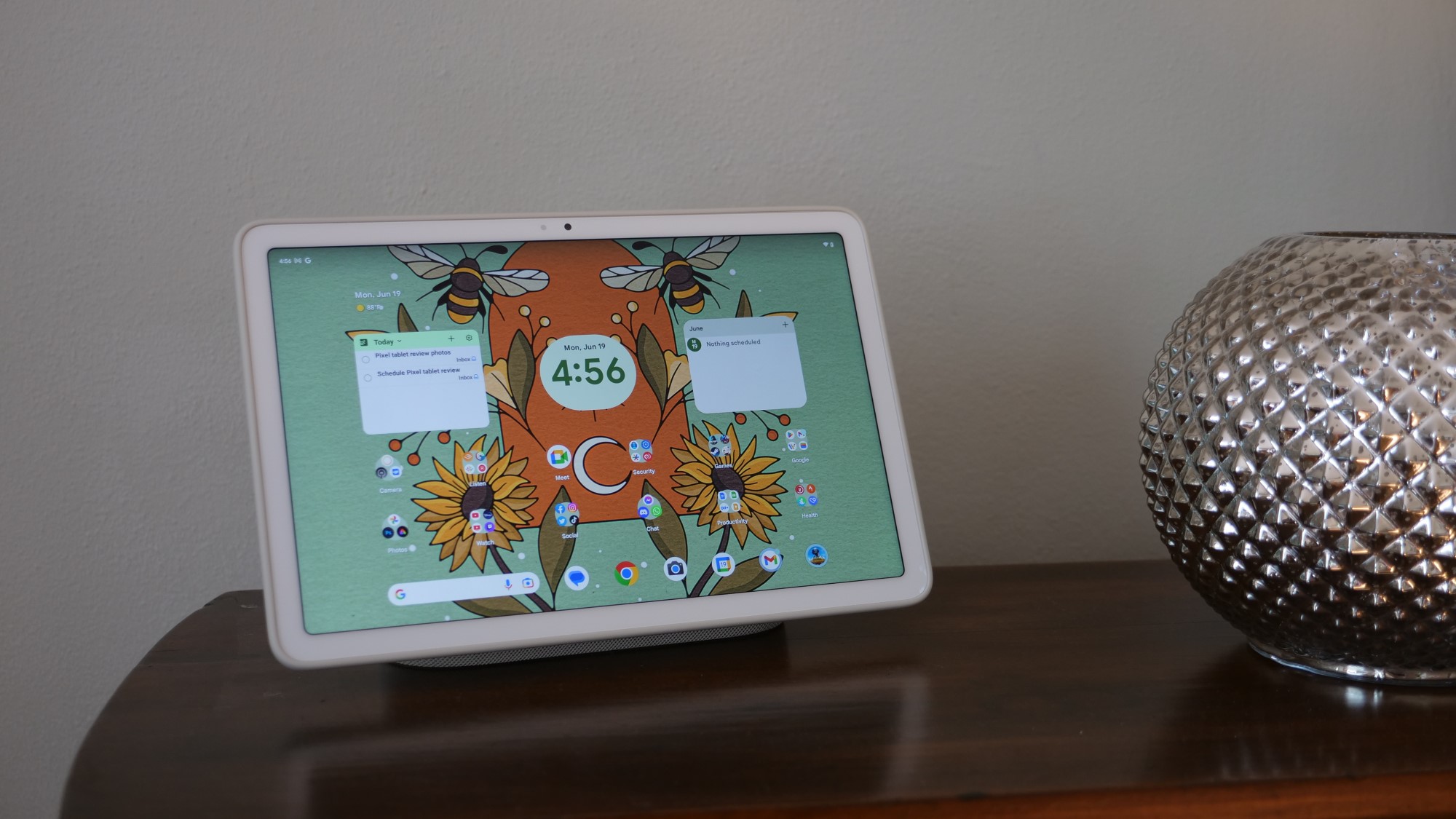
The Pixel Tablet is $499, which includes its speaker dock that also doubles as its wireless charger. Unlike the iPad, there is only the 11-inch Wi-Fi model with a Google Tensor G2, Titan M2 security coprocessor, 8GB of RAM, and 128GB of storage. For better or worse there are no other storage tiers, cellular models, or anything else to bump that price up on you.
Your only choice is going to be which of the three Pixel Tablet colors you prefer; Porcelain, Hazel, or Rose.
My Porcelain review unit also came with the Pixel Tablet Case ($79), which features a built-in metal kickstand so you can watch content hands-free when it’s away from the dock. The kickstand is shaped to fit perfectly around the dock connector and the Pogo pins are replicated on the back of the case so it doesn’t interfere with the normal docking performance.
Pixel Tablet design
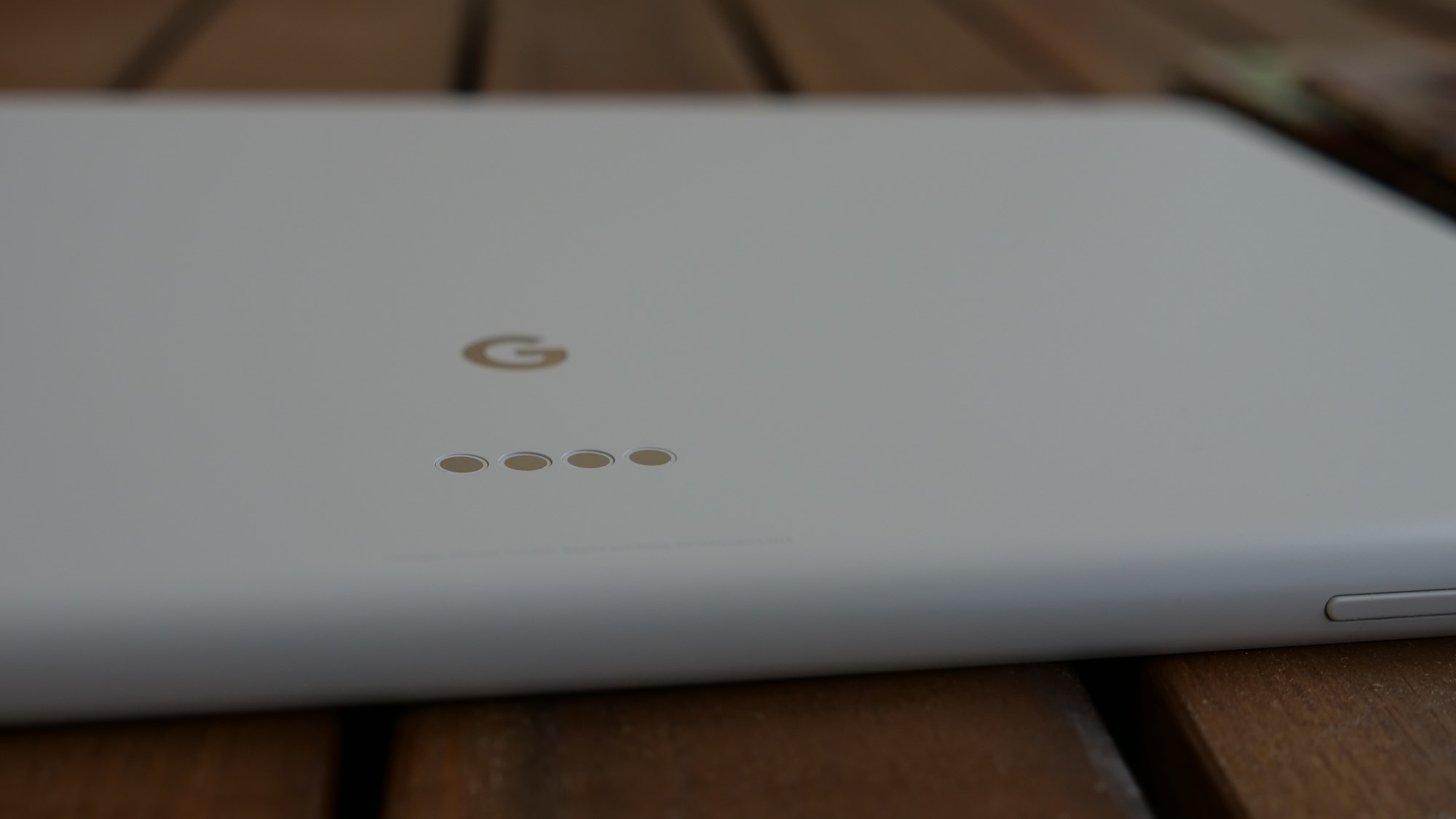
After unboxing the Pixel Tablet I was loath to put a case on it. Our Editor-in-Chief, Sherri L. Smith begrudgingly said it “feels good in the hand,” one of her least favorite turns of phrase, after her hands-on with the Pixel Tablet at Google I/O, and she’s absolutely right. The nano-ceramic-coated tablet just feels natural to hold and remains blessedly free from fingerprints even after hours of use.
With that said, you’re going to want the Pixel Tablet Case. The built-in kickstand is crucial when I’m wandering around the house with the tablet and want to plop it down to watch a show while I cook dinner or listen to a podcast while I work out. It’s a vastly different feel from the tablet, but the rubberized case is still quite comfortable to hold, once you figure out how to avoid that metal kickstand. It’s my one complaint about the case, a slightly different placement or a soft coating on the metal would make finding that perfect handhold on the case easier.

Turning back to the bare tablet, around the back you’ll find an 8-megapixel camera in the top-left corner. A glossy G sits centered towards the bottom of the panel just above the golden magnetic Pogo charging connectors. The glossy display that occupies the majority of the front of the tablet is encased in rather thick white bezels. While laptop bezels are increasingly vanishing, that’s a bigger challenge on tablets where you need space to hold it without touching the screen. Finally, you have the front-facing 8MP camera at the top bezel in landscape.
At the top-right in landscape, you have the power button and volume buttons with the USB Type-C port on the right. Large vents on either side of the tablet give the speakers room to breathe.
At 10.2 x 6.7 x 0.3 inches and 1.1 pounds, the Pixel Tablet is similar in size and weight to its competitors. The iPad Gen 10 (9.8 x 7.1 x 0.28 inches, 1.05 pounds) and OnePlus Pad are slightly shorter, and wider, but thinner and lighter than the Pixel Tablet.
Pixel Tablet security
The Pixel Tablet offers considerable security features for a consumer-focused tablet. First, you have the expected fingerprint scanner baked into the power button. I wish it had facial recognition, but I’m sure it was ruled out in order to hit that sub-$500 price point.
Inside things get more interesting with the Titan M2 security chip making its first appearance in a tablet. A custom piece of silicon, the Titan M2 is a dedicated security chip with its own separate memory, RAM, and cryptographic accelerator. The last piece of this is part of the secret sauce when it comes to encryption. In short, it’s the tablet’s version of a laptop’s TPM (Trusted Platform Module).
Software-wise, Pixel Tablet owners can expect a minimum of five years of security updates.
Pixel Tablet display
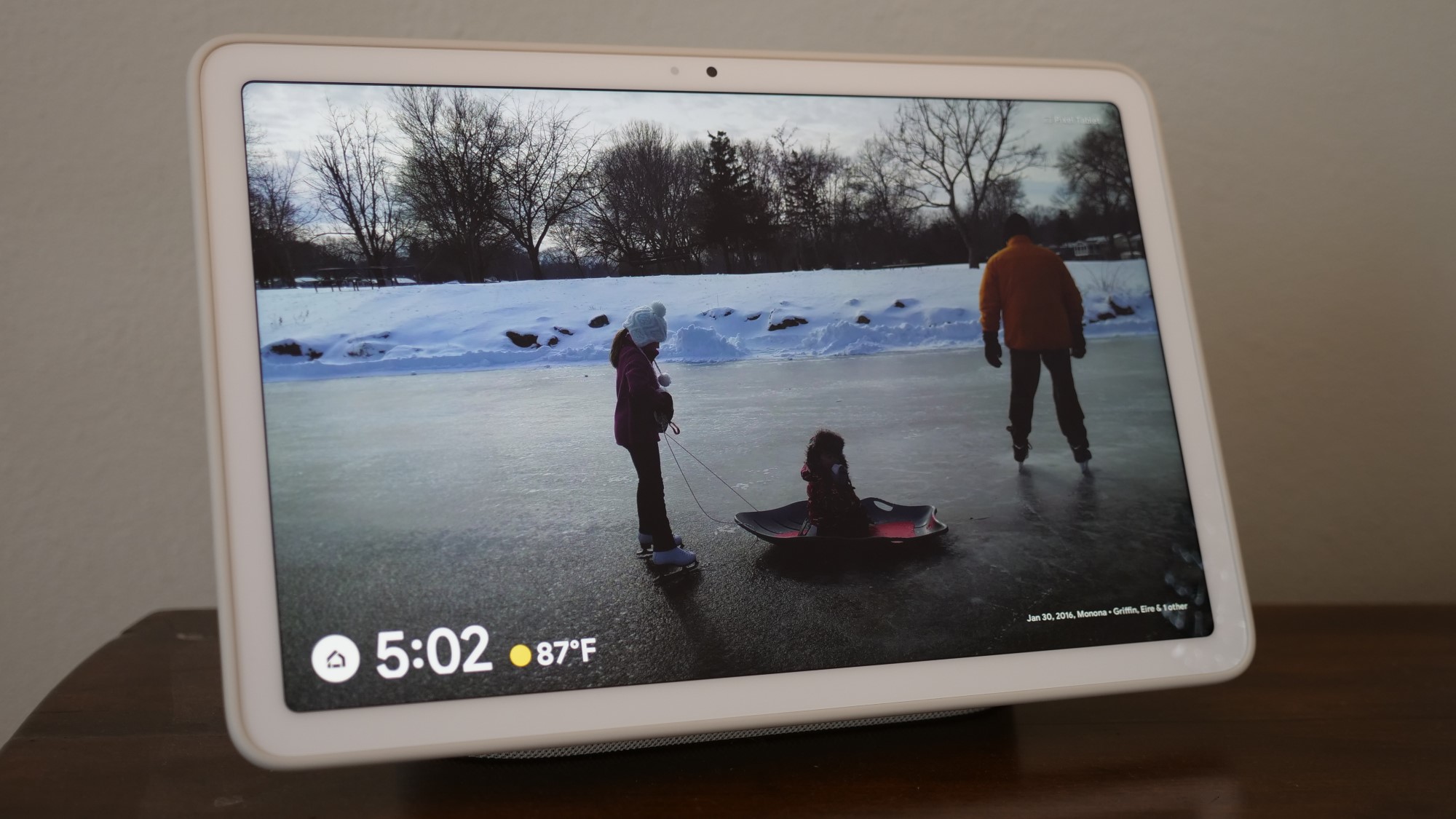
When my son first saw the Pixel Tablet displaying a photo on my desk he thought it was a framed photo. It’s an understandable mistake, the 11-inch, 2560 x 1600, 16:10 aspect ratio LCD display renders sharp and almost tactile photos when in its screen saver mode.
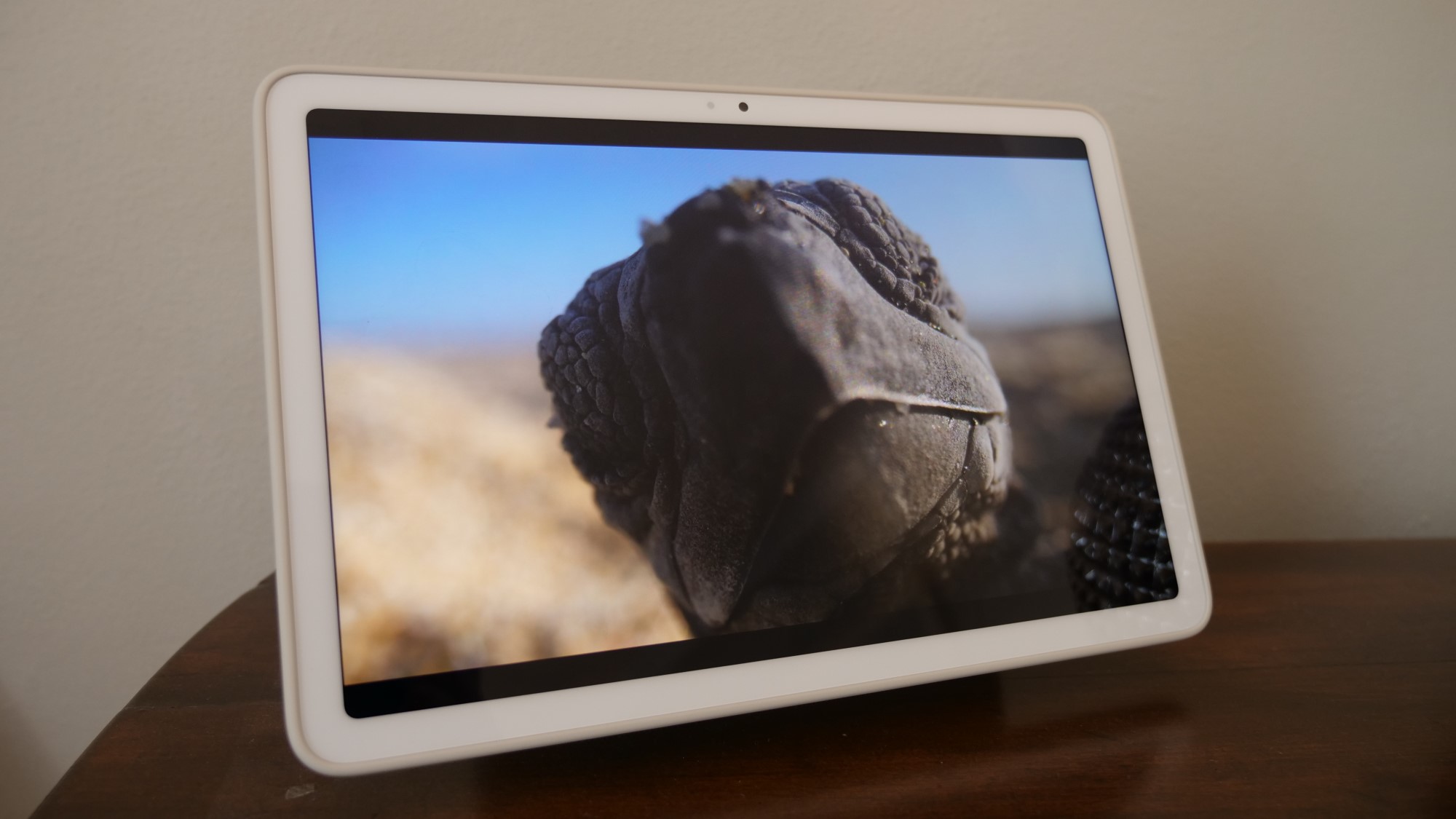
While I got to enjoy my old photos throughout the week, I turned to Our Planet II on Netflix for a less nostalgia-fueled gauge of the display and it did not disappoint. I watched “Chapter 3: The Next Generation” and the turtle hatchlings emerging from the sand proved an excellent showcase for the Pixel Tablet’s capabilities for entertainment. The tiny grains of sand were perfectly visible thanks to the sharp display on the tablet and the brilliant blue of the sky contrasted brilliantly with the tiny dark pebbled face of the young turtles as they began their journey to the sea.
| Tablet | Brightness | DCI-P3 color gamut | Delta-E color accuracy |
| Google Pixel Tablet | 443 nits | 74.7% (natural); 85% (adaptive) | 0.05 (natural); 0.12 (adaptive) |
| Apple iPad Gen 10 | 504 nits | 72% | 0.21 |
| OnePlus Pad | 465 nits | 79.1% (natural); 113% (vivid) | 0.25 (natural); 0.29 (vivid) |
While it came in last among its competitors in brightness, 443 nits is a strong result that even with a glossy display does fine in all but the worst possible lighting conditions. In our DCI-P3 color gamut testing, the Pixel Tablet outperformed the iPad in both its natural and adaptive settings, while the OnePlus Pad proved far more vivid than both. Finally, Pixel Tablet owned a category with its Delta-E color accuracy delivering some of the best scores we’ve seen at 0.05 in its natural setting, which perhaps explains its incredibly realistic display of photos.
It’s not the most vivid tablet display that I’ve seen, but it serves up a very balanced image that I found excellent for every type of media I threw its way.
Pixel Tablet audio
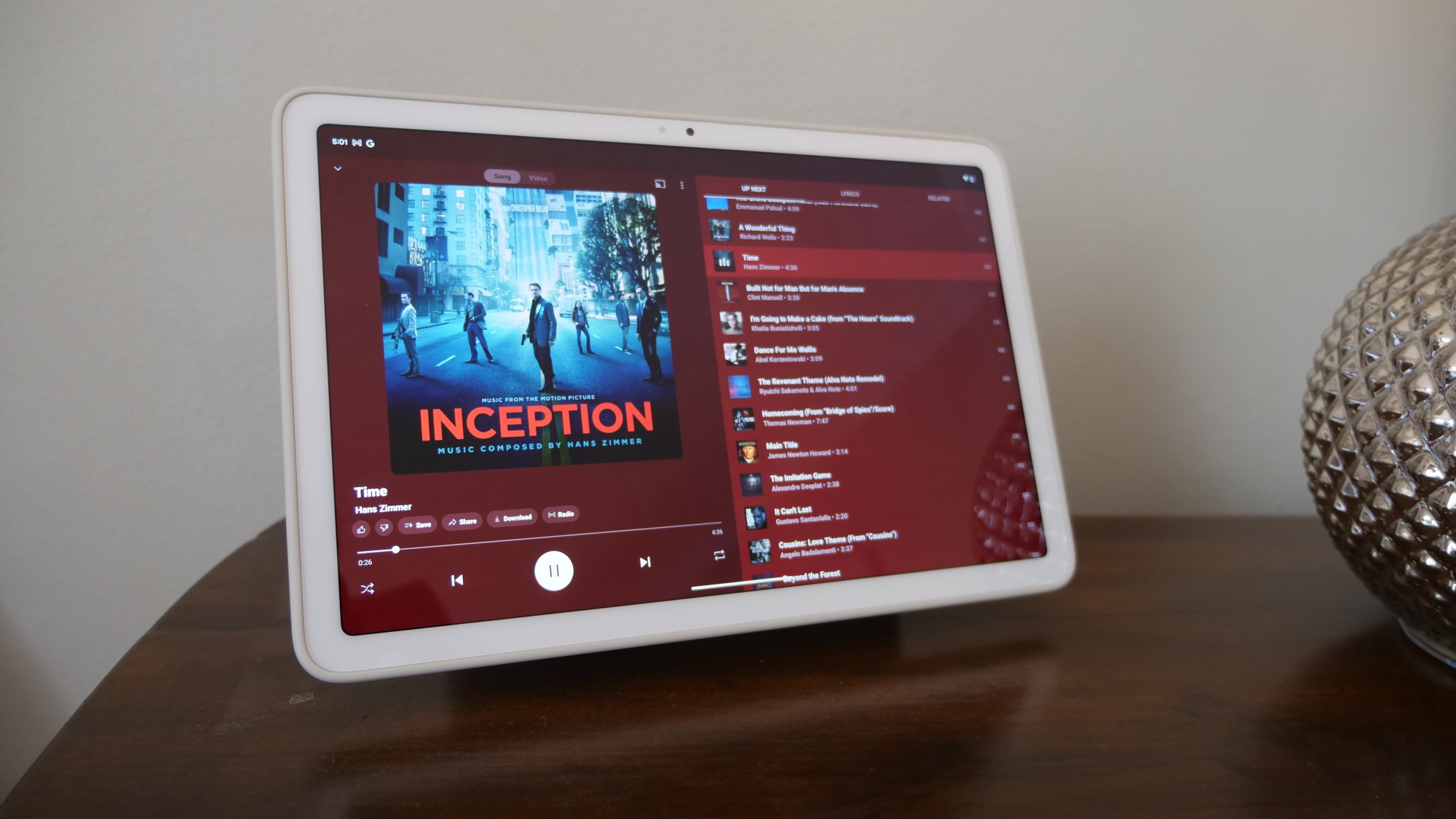
The pair of speakers on either side of the tablet delivers more power than you would expect from its diminutive frame. I fired up my familiar writing companion, a relaxing film score playlist, and listened to “Time” by Han Zimmer. The gentle first chords of the melody from Inception played delicately on the speakers, but it was the build that caught me off guard as the resonant bass undercurrent swept through convincingly as the song progressed.
I then placed the Pixel Tablet on its Charging Speaker Dock and it may as well have been the kick to bring me out of the dream state. While I was impressed by the speakers on the tablet, when the dock suddenly augmented it my entire 18 x 12 listening space was filled with rich sound. It easily outperformed the smart display that I typically have in its place and a Nest mini in the neighboring kitchen. Speaking of the Nest mini, the Pixel Tablet can naturally join up with any other Nest speakers in your home for an affordable full-home audio system.
Pixel Tablet Charging Speaker Dock
The Charging Speaker Dock is the biggest differentiator for the Pixel Tablet, giving it a dual-life as a tablet and a smart home hub. Like the rest of Google’s Nest speakers and hubs, it features a fabric covering to give it a more pleasing home decor look and feel. At 6.6 x 3.7 x 2.7 inches, the dock should fit just about anywhere that you would want to put the tablet, such as a side table, bookcase, or counter.
I’ve already touched on its excellent audio performance, and it does its other duty as the 15W charging dock and stand for the Pixel Tablet brilliantly as well. The tablet snaps firmly to the dock with or without its case and immediately flips into its docked mode thanks to the matching Pogo plugs. Now it’s a smart display, trigger it with “Hey Google” and you can control any smart home gadgets you may have, view your Nest cameras, or just get it play some music while you do the dishes.
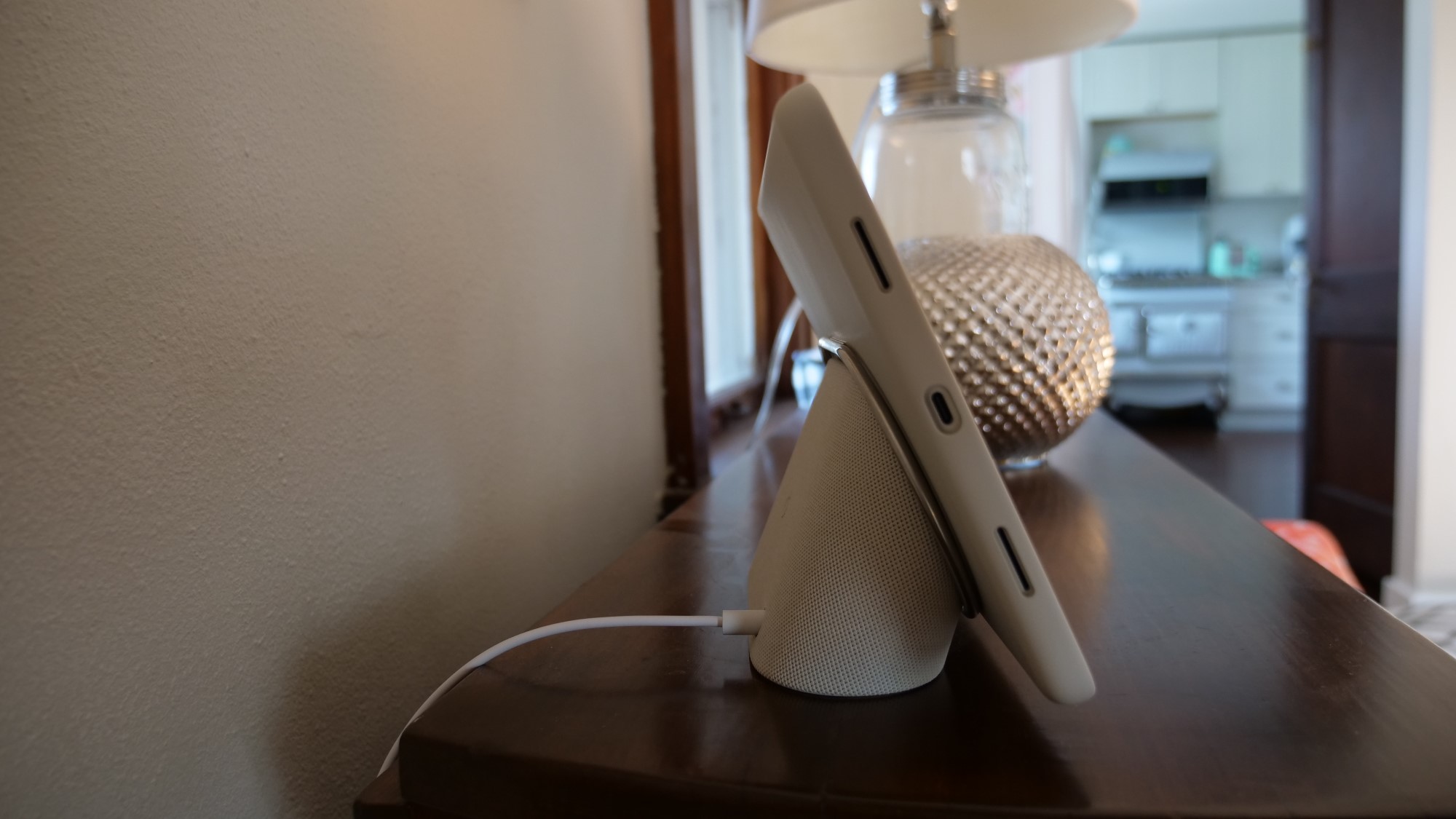
My complaint about the Charging Speaker Dock isn’t in regards to anything it does, but rather what it doesn’t do. Once you remove the Pixel Tablet from it, the dock is essentially a paperweight. I understand it would have added cost, but it seems obvious to make the dock essentially a standalone Nest mini when the tablet isn’t docked.
Obviously, the intent is that you use the Pixel Tablet and then immediately return it to the dock so you aren’t exposed to that sad little blank oval with exposed Pogo plugs for long, but that’s in a perfect world. Particularly if you are using the Pixel Tablet as a shared device, you’ll end up with odd moments where someone will try to say “Hey Google” to a Pixel Tablet that isn’t there. Google may have also considered slapping its stylized “G” or something on the face of the dock so it isn’t quite as bland when the tablet is off doing tablet things.
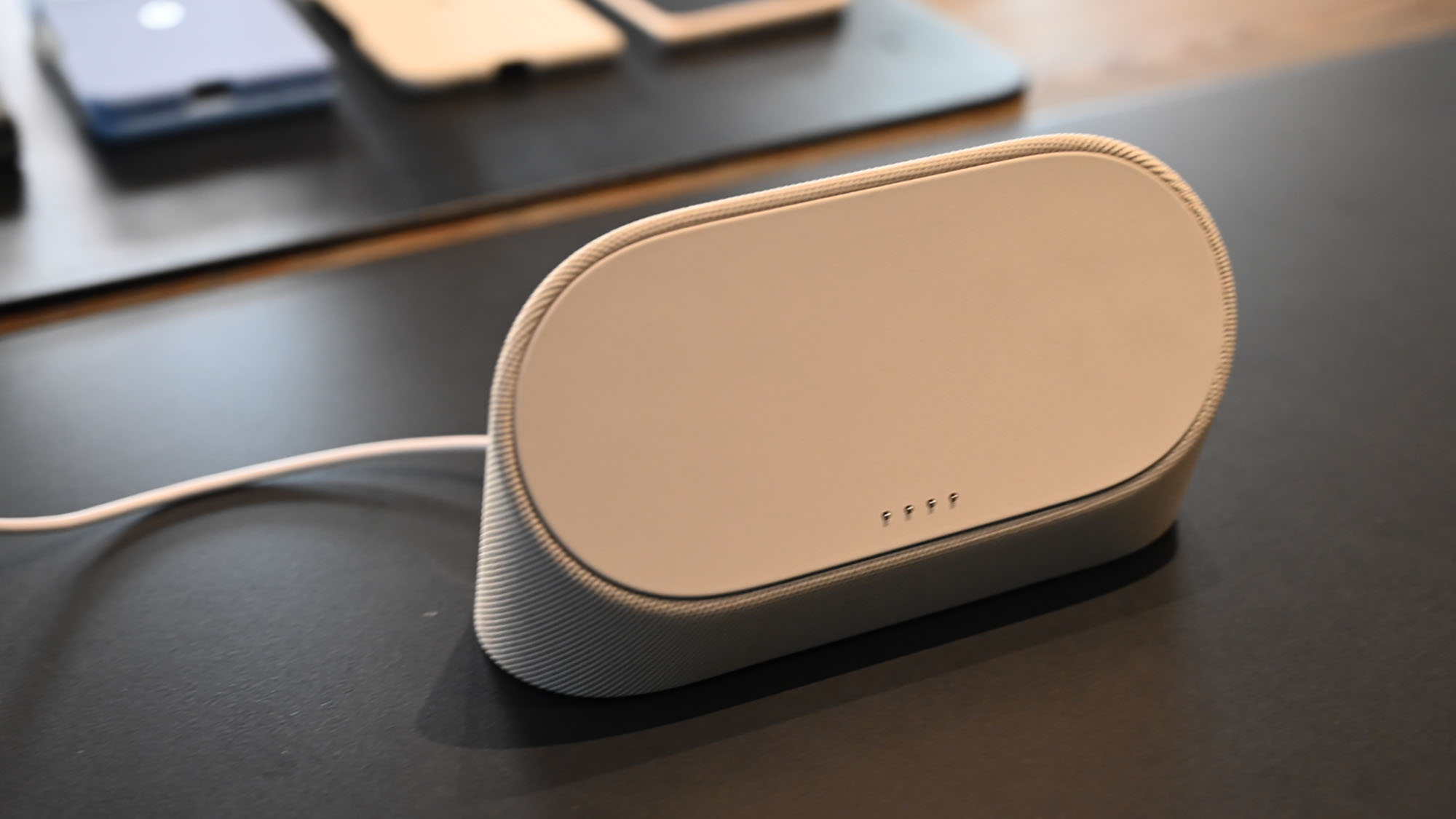
Pixel Tablet performance
No real surprise when it comes to the performance of the Pixel Tablet as it features the same Tensor G2 chip found in the Pixel 7 and Pixel 7 Pro. What does that mean? In real-world usage, you can expect smooth and zippy performance that handles any productivity or other apps you are likely to toss at the Pixel Tablet.
I had it jump through my typical multitasking hoops of running a YouTube video in the background and then firing up an impractical number of tabs in Chrome before jumping between a number of apps. The Pixel Tablet held up to this just fine. It can even play some pretty taxing games, a few chicken dinners in PUBG Mobile confirmed that I’ve not completely lost my touch and that as long as you avoid the very top settings you’ll be good to game.
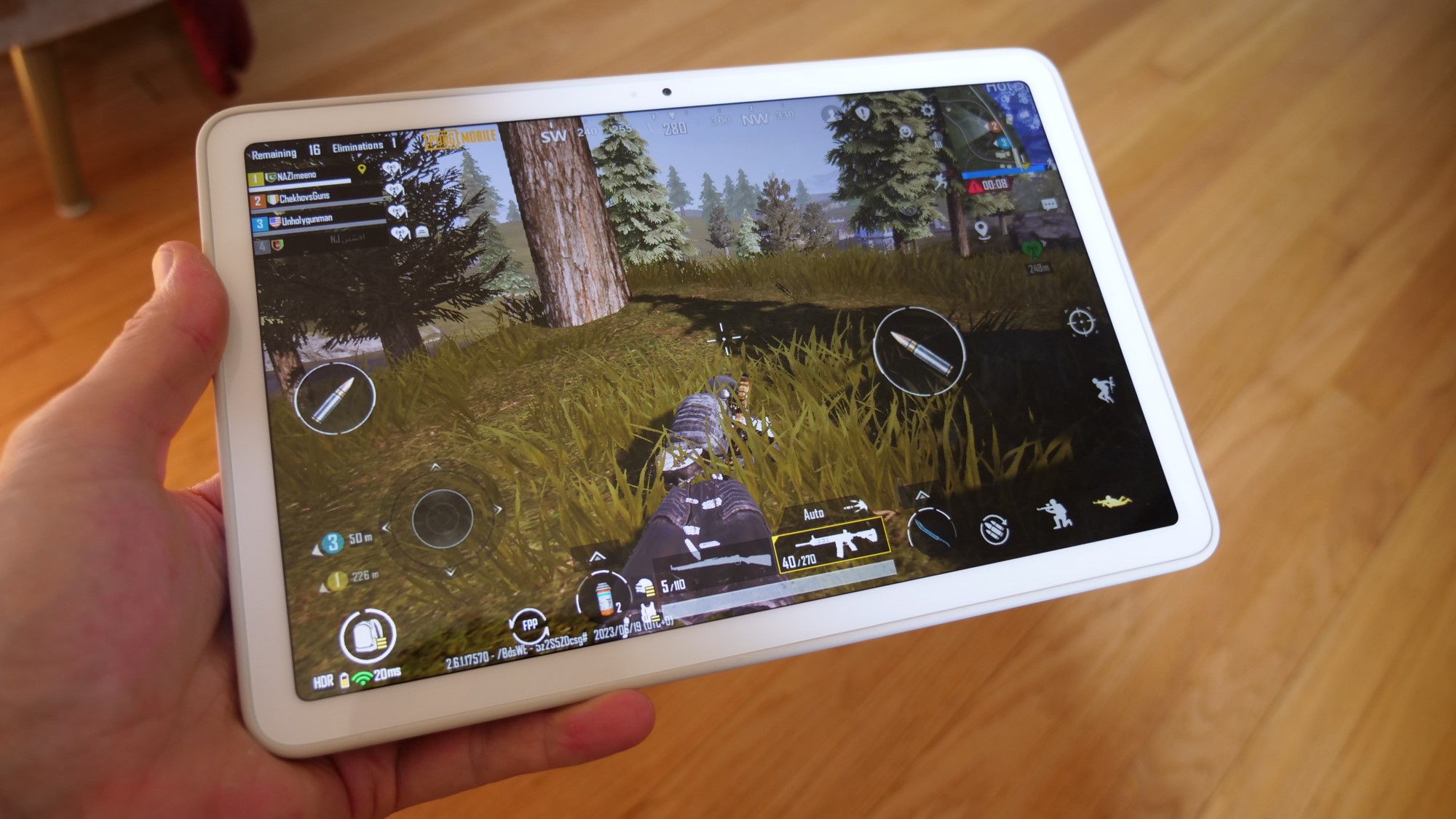
| Tablet | Geekbench 5 | Adobe Premiere Rush | 3DMark Wild Life Unlimited |
| Google Pixel Tablet | 3,004 | 49 seconds | 39 fps |
| Apple iPad Gen 10 | 4,040 | 30 seconds | 47 fps |
| OnePlus Pad | 3,275 | 55 seconds | 53 fps |
Just like its smartphone brethren, the Pixel Tablet didn’t fare as well on benchmarks.
Geekbench 5 saw the typical dominance from the iPad Gen 10 and its Bionic A14 CPU at 4,040, outscoring the Pixel Tablet (3,004) by over 1,000, and the OnePlus Pad (MediaTek Dimensity 9000, 3,275) by over 750.
Our Adobe Premiere Rush test has the tablets render a brief video and here the Pixel Tablet at 49 seconds did overtake the OnePlus Pad (55 seconds), but still no match for the iPad (30 seconds).
Finally, turning to graphics performance, the OnePlus Pad gets its moment in the sun with 53 fps on the 3DMark Wild Life Unlimited test. That’s enough to defeat both the iPad (47 fps) and the Pixel Tablet (39 fps).
Just as with the recent Pixel phones, the benchmarks don’t tell the full tale of the Pixel Tablet, so unless you are looking for a tablet to replace a laptop — in which case I’ve hopefully already told you the Pixel Tablet isn’t for you — then the performance of the Pixel Tablet will be more than enough for your needs.
Pixel Tablet cameras
Both the front and the rear cameras on the Pixel Tablet are 8MP with 1080p video recording at 30 fps. Both are just fine for Google Meet videos, snapping photos for assignments, or scanning photos, but please use something better to take actual photos or videos that you care about. If you own a smartphone produced within the last three to four years it will almost certainly vastly outperform the cameras on the Pixel Tablet.
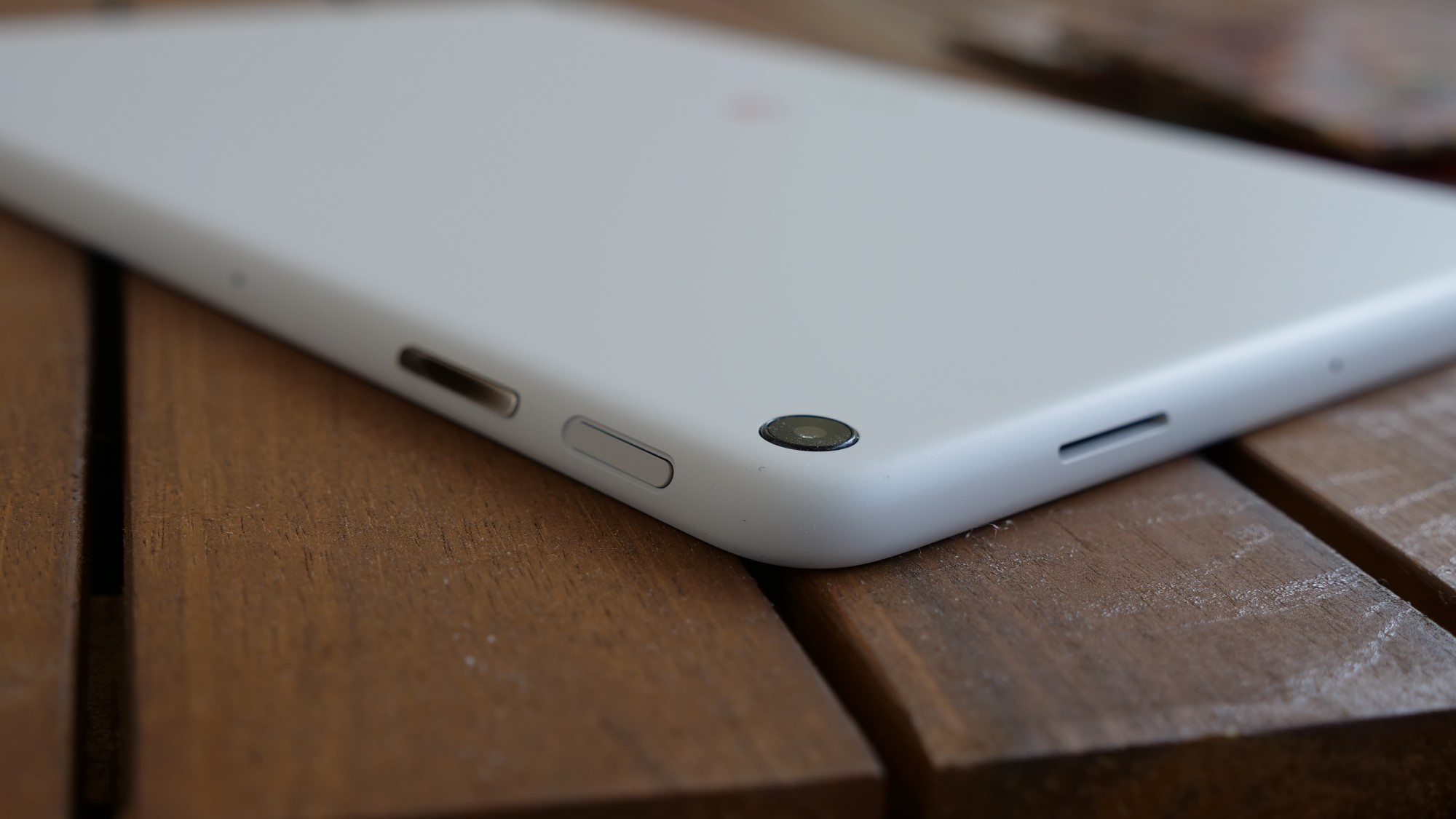
If you want the precise specs, the f/2.0 aperture for the front and back cameras is not bad at all, but the fixed focus, 1/4″ sensor size, and twin sensors on the front and back all suggest Google doesn’t intend for you to use them for anything elaborate.
While some may consider this to be negative, I deem this to be Google making the right decision. There’s just no reason to put amazing cameras in this tablet, it is very clearly designed to be a tablet that is used around the home and while maybe that will lend itself to the occasional snapshot or video, it isn’t going to be anyone’s primary camera.
Regardless, you do benefit from all of Google’s typical photo software prowess with features like Magic Eraser, Photo Unblur, and Night Sight. It is an outstanding device for tinkering with the photos from your Pixel 7 or whatever phone you typically use.
Pixel Tablet battery life
Google says that the Pixel Tablet has an estimated battery life of up to 12 hours of video streaming. This may be the closest any company has ever come to nailing the results of our testing exactly. The Pixel Tablet lasted 11 hours and 57 minutes in the Laptop Mag battery test, which involves surfing the web continuously on Wi-Fi with the display set at 150 nits of brightness.
| Tablet | Battery life (hours and minutes) |
| Google Pixel Tablet | 11:57 |
| Apple iPad Gen 10 | 10:57 |
| OnePlus Pad | 13:31 |
That’s good enough to overtake the iPad Gen 10 (10:57) by an hour, but the OnePlus Pad wins the day with its outstanding 13 hours and 31 minutes. It’s a particularly notable result for the Pixel Tablet as the Google Tensor-based Pixel phones haven’t typically fared well in our battery testing, so we’ll be watching to see if the Pixel Fold can manage a similar trick.
Bottom line
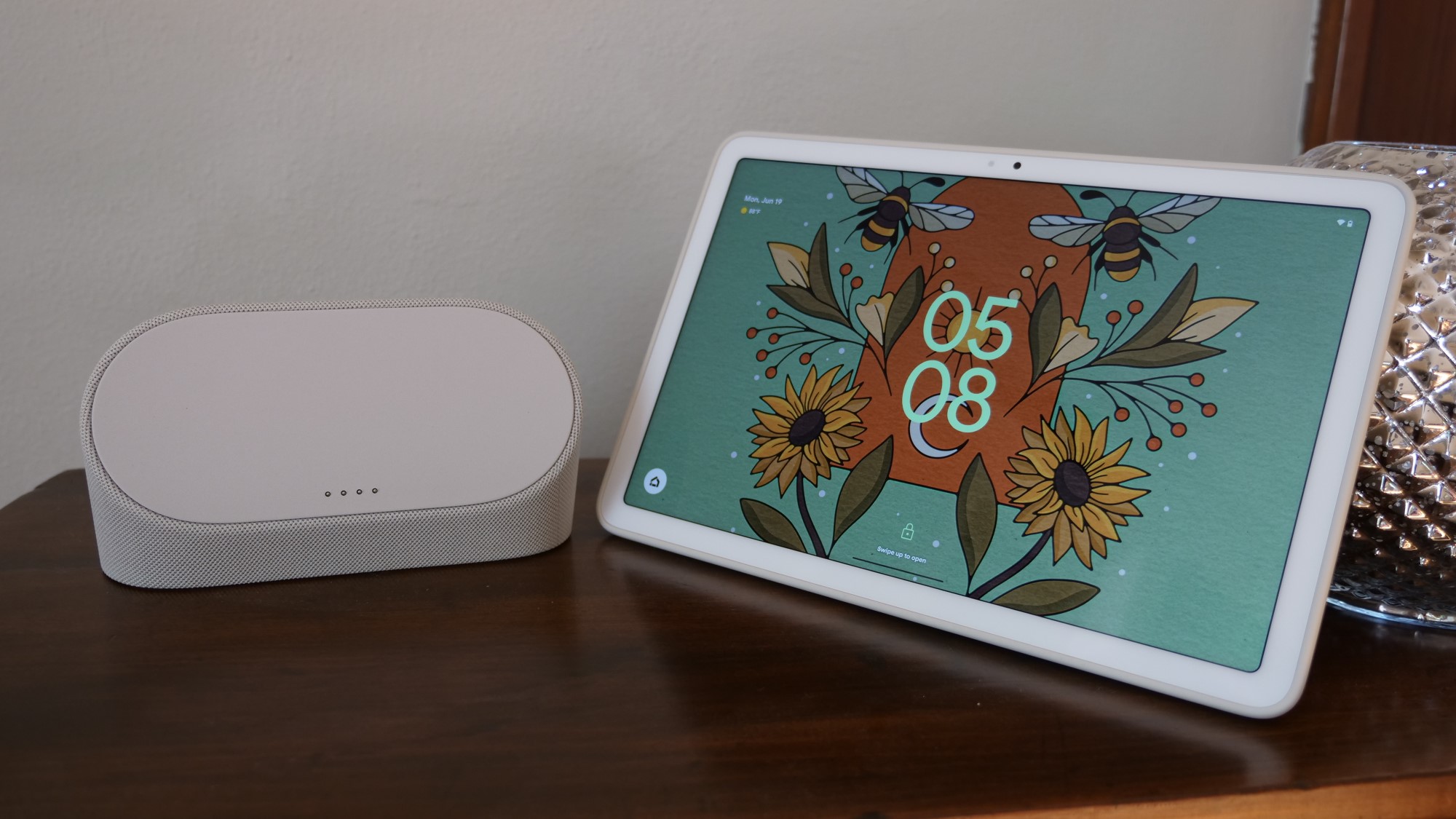
I love what Google has done with the Pixel Tablet. While it isn’t the first to try to blend a tablet with a smart display, it’s done it far more seamlessly and with a tablet that can still go toe-to-toe with the sub-$500 competition. If you have ever considered either purchasing a tablet or a Nest Hub, then Google just made this decision very easy for you as this is the best of both worlds.
Has Google created the perfect tablet? No, of course not. I said at the outset that the Google Pixel Tablet is the perfect tablet for me and my family, but that doesn’t mean it’s perfect. If you want a tablet that can be a laptop replacement, this is not the tablet for you. If you want a tablet predominantly to throw in your bag for travel, this is also not the tablet for you.
Google may address some of these in the future, we’ve seen hints at 2-in-1 aspirations for the Pixel Tablet, but for now, I wouldn’t buy it with that use case in mind. Like some of my colleagues, I’ve been frustrated trying to use a tablet as a laptop anyway, so that use case isn’t swaying me anyway. My main hope for a Google Pixel Tablet 2 will be an expanded feature set for the Charging Speaker Dock, but for now, I’m thrilled with what Google has created here.
For a casual tablet user and anyone with at least a few smart home devices, this is a dual-threat device that is well worth the $499.
Source link
 notebook.co.id informasi dan review notebook laptop tablet dan pc
notebook.co.id informasi dan review notebook laptop tablet dan pc